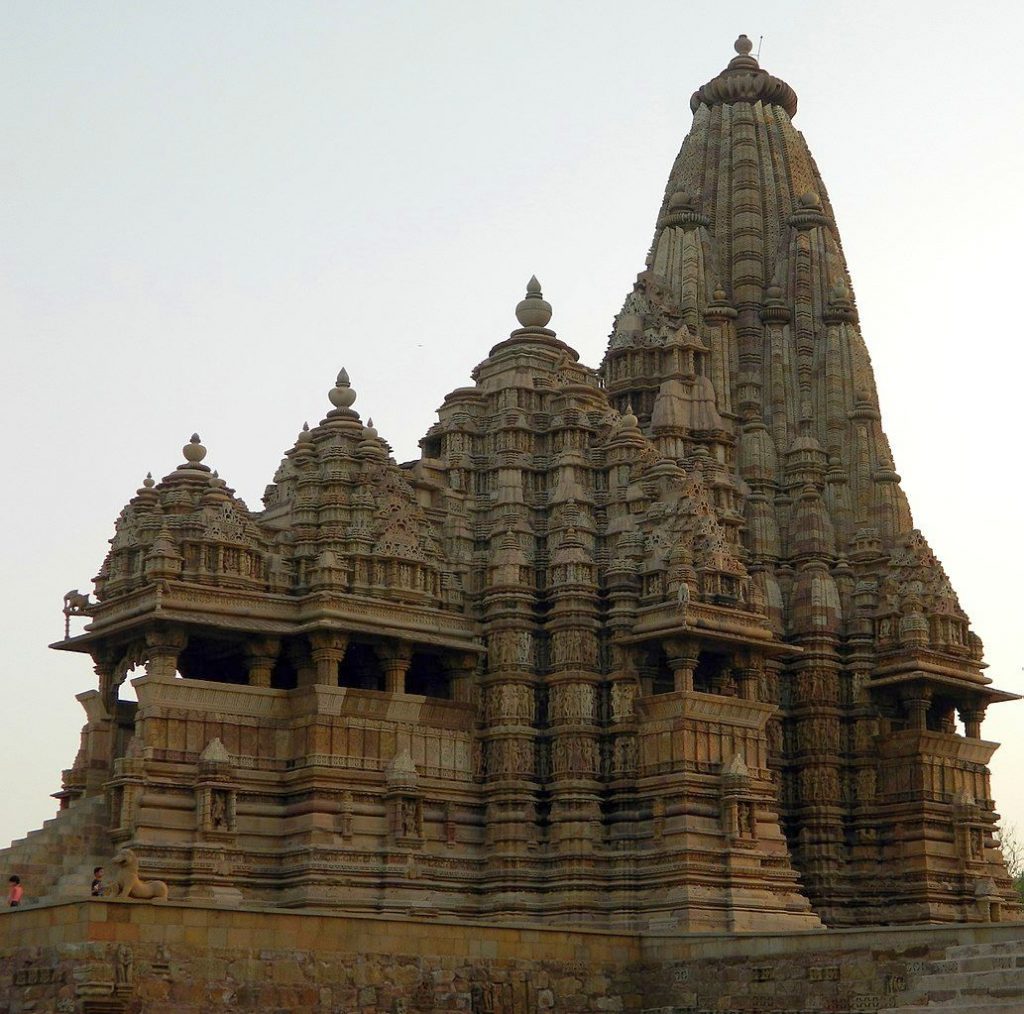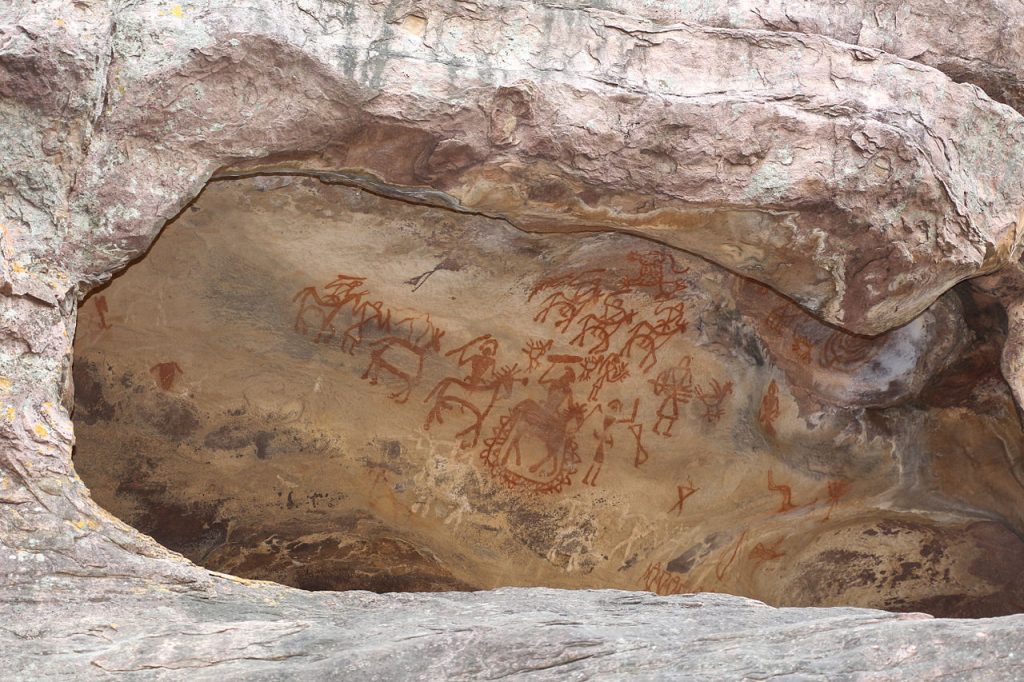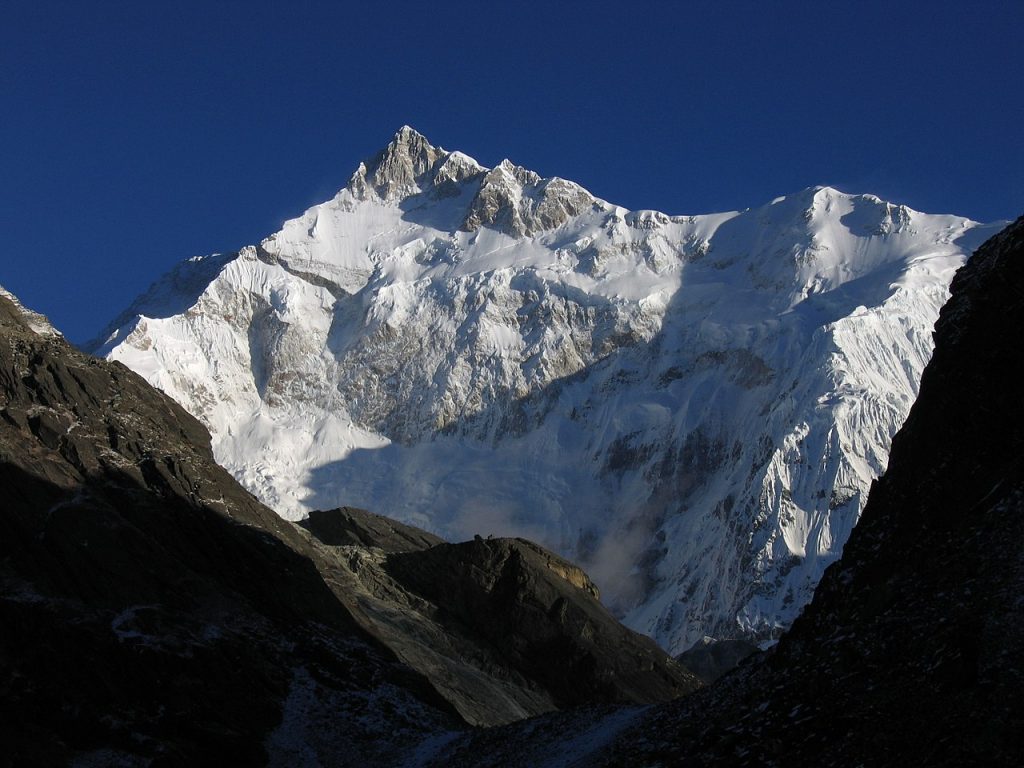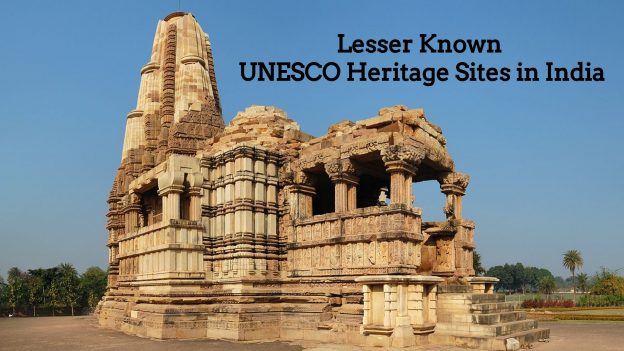By Siane Sreedharan
Etched by mountains, seas and rivers, India has been around since the dawn of civilization, making it among the most ancient societies on earth. This massive nation that emerges from the Himalayas in the north and descends into the Indian Ocean towards the south, has many wonders of old and boasts of some of the highest numbers of UNESCO World Heritage sites on the globe. Whether you are an archaeological buff, a history lover or a wildlife enthusiast, there’s something for you as the country has over 35 heritage sites to explore. Let’s look at some of the most fascinating UNESCO World Heritage sites that may not be world-famous as its counterparts, but are equally enthralling and endearing.
Khajuraho Group of Monuments, Madhya Pradesh

Architecture that will leave you wide-eyed! (Source: Blessedapples @ Wikimedia Commons)
Dating back to the Chandela era and built around the 10th and 11th Centuries, this group of temples is renowned for the exemplary artwork, especially its erotic sculptures. Segregated into three groups viz the Eastern, Southern and Western, these 25 temples showcase and celebrate architectural ingenuity, artistic visionary and spiritual beliefs of ancient India. Standing the test of time, these preserved, stunning monuments took nearly a century to be erected. Dedicated to countless Hindu gods and goddesses as well as Jain deities, these magnificent places of worship were hidden in obscurity after the fall of the Chandela kingdom and the emergence of the Mogul dynasty. Out of the original 85 temples, only 25 survived and the site was discovered by a British engineer in 1830. Kandariya Mahadev, Lakshman Temple, and Parshvanath Temple are some of its famous buildings.
Rock Shelters of Bhimbetka, Madhya Pradesh

A walk through history and art! (Source: Bernard Gagnon @ Wikimedia Commons)
If paleolithic art intrigues you, then a visit to the Rock Shelters of Bhimbetka will be enthralling. These pre-historic rock caves were found in 1957 during an archaeological dig led by Dr. Vishnu Wakanka and are riddled with legends and folklore. Chiseled sandstone bluffs on the Vindhyas showcase paleolithic and mesolithic art forms, giving a glimpse of what life would have been some 30,000 years ago. There are about 500 such caves spread across the mountain range. Take a walk through these ancient rocks and get awed by the paintings and their surroundings.
Rani-ki-Vav, Gujarat

You will lose your heart to the beauty and intricacy of the step-well! (Source: Kshitij Charania @ Wikimedia Commons)
Discovered by chance during an archaeological survey in the 1980s to know the truth behind the mythical Saraswati River, Rani-ki-Vav or the Queen’s Stepwell is truly a marvel to behold. An ingenious masterpiece of stepwell architecture, it also depicts a story of love. Built in the memory of King Bhimdev I by his queen Rani Udayamati, Rani-ki-Vav is a striking terraced stepwell. Adorned with intricate idols of Hindu deities and mythological themes, it was erected on the banks of the Saraswati River. Initially carved of seven levels, only five remained intact after it was covered in silt. This bewitching site not only showcases ancient India’s technological advancement but also artistic creativity at its peak.
Khangchendzonga National Park, Sikkim

Nature at her finest! (Source: Ashinpt at enwiki @ Wikimedia Commons)
Wilderness at its best, the stunning terrain of alpine, subtropical, arctic and Himalayan ecosystems, puts this national park among the world’s rarest park-lands. Lying in the bosom of The Himalayas, Khangchendzonga National Park is mystical and spellbinding. Cut by the Rathong Chu River and engulfed by a fertile valley, this sacred land of the Lepcha people is a splendorous landscape of glacial peaks, rocky bluffs, and rhododendron jungles. Home to the imposing Kanchenjunga, this natural wonderland is the abode of the elusive red panda, blue sheep and musk deer. The park was added in the UNESCO site in 2016 for its mixed heritage.
Fatehpur Sikri, Agra

Bringing your history lessons to life! (Source: Bruno Girin @ Wikimedia Commons)
Though short-lived, Fatehpur Sikri was once the capital of Emperor Akbar’s reign. A story of hope and loss evidently spans this ancient, abandoned city. A canvas of Indo-Islamic architectural styles adorns this historic site. A treasure trove of architectural gems such as Jama Masjid, Panch Mahal, Diwan-I-Khas and others are some of its beautiful remnants. This is where the stories of Akbar and Birbal come alive when you visit Birbal’s Palace.

Great
Marvellous places & a nice write up. Thank you for sharing.